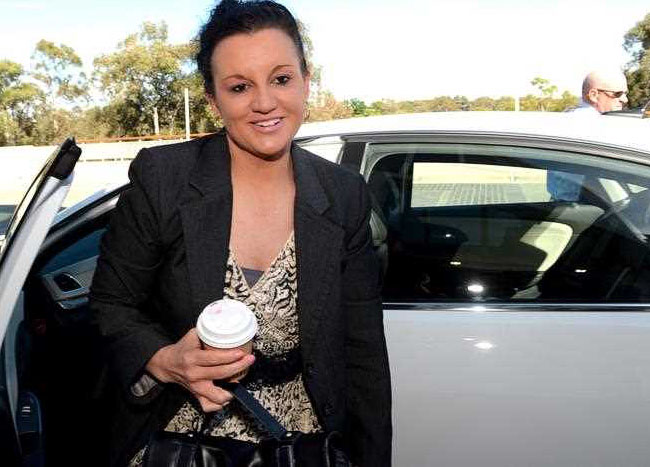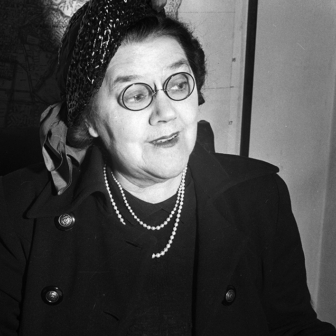The Palmer United Party’s partial disintegration this week is both good and bad news for the Abbott government. Jacqui Lambie’s declaration that she will vote against all government legislation until and unless it revises its Defence Force pay deal will make life difficult; even assuming she doesn’t spend the next five and a half years rejecting everything, she’ll be one more cat needing to be herded. Getting the PUP on board will no longer bring her guaranteed support.
The numbers in the seventy-six-strong Senate for the 2014–17 term are: thirty-three Coalition, twenty-five Labor, ten Greens and eight others.
In simple mathematical terms, any bill opposed by Labor and the Greens can’t get from thirty-three to thirty-nine without the PUP. This applies whether the PUP consists of three or four people. And the Australian Motoring Enthusiast Party’s Ricky Muir says he remains part of the PUP bloc. So now it has three. And being only three, the government has a larger task scraping together a Senate majority.
(Abstentions change this equation a little. For example, if the rest of the crossbench voted neither yes nor no, the Coalition plus three would defeat Labor plus the Greens.)
But if Muir becomes a floating entity like Lambie, and Palmer is left with only two senators, that would be helpful to the government, because then bills could pass without PUP support. In this scenario, if Clive digs in they can go after the other six. And that would make Clive less likely to dig in.
A large part of the government’s current political problems come from its inability to get budget measures through the Senate. The alternative to getting bedded down in statute books is that they remain in the ether, endlessly picked at and turned over.
This is a difficult Senate for the government, but there have been worse ones. The Rudd government faced a Coalition-controlled upper house for its first six months. Then, from 2008 to 2011, anything opposed by the Coalition needed support from the Greens and Nick Xenophon and Family First’s Steve Fielding. There was no either/or. Put another way, Labor faced a chamber controlled by a Coalition–Family First combination.
In theory, the current Senate is easier for the government. And if it had started with a decent number of senators, the swollen crossbench would present more opportunities than challenges. But although the Coalition boasts a very big majority in the House of Representatives, its Senate presence is meagre – lower than at any time since the Hawke government’s first two terms.
Labor’s seat haul of twenty-five, meanwhile, is its smallest (as a proportion of the total) since the current voting system started in 1949. This means that the major parties hold just 76.3 per cent of Senate seats between them. Before this year, it hadn’t dipped below 84 per cent (adopting an inclusive definition of major-party breakaways) in over a century. For most of the time it was above 90 per cent.
Today’s numbers represent the outcome of two elections in a row that saw very low major party support. And of course the proportional voting system.
In the beginning, following the Commonwealth Electoral Act 1902, the Senate was elected by “block vote.” This seemed a good idea at the time, and it probably was, because Australia did not yet have a two-party system. A decade later we did have one, and from then until 1949 governments of the day were almost guaranteed a rubber stamp in the Senate.
Under the block vote, people put a cross next to a number of candidates, that number being however many Senate spots were being filled (which was usually three per state). Those votes were all counted and the three with the most votes were elected. End of story. It meant the party with the most support reaped close to 100 per cent of seats.
The change to preferential voting in 1918 didn’t alter this much. But in 1948 the Chifley Labor government, suspecting it was about to spend some time in opposition, replaced that system with the single transferable vote, which is what we still have today. Tickets, or above-the-line voting, were introduced in 1984.
By world standards, we have a powerful upper house. Canada, for example, has a Senate, but (like the UK House of Lords) it is appointed. New Zealand gets by without one. And unless support for the major parties recovers in years to come, the Senate will get more and more difficult for Australian governments.
In the lower house, by contrast, single-member electorates delivered the major parties all but five of the 150 seats (the same as after John Howard’s 1996 victory) despite correspondingly low primary vote support there.
It’s not the ticket system and micro parties that rob the major parties of Senate seats, it is simply their low levels of support. Major parties attracted just 67.8 per cent of the primary vote last year and can’t complain about the 72.5 per cent of seats it delivered them. Where the current ticket system malfunctions is mostly in how it allocates those non-major seats. In Victoria, the Australian Motoring Enthusiast Party’s Ricky Muir was elected last year with just 0.5 per cent of the vote. Nine other parties received more support, topped by Palmer United Party with 3.7 per cent, but came away empty-handed in that state. If Muir’s success represented voters’ conscious preference allocation choices it would not matter. But it didn’t, it was the product of decisions taken in party backrooms.
The Liberals, Labor and Greens are all in favour of replacing the ticket system with optional preferential voting before the next election. This would stop parties with minuscule support being elected, but would do little to reduce the size of the growing Senate crossbench. Only a return to high levels of support for the major parties will do that.
Or, perhaps, a different voting system – like the one that was used from 1903 to 1946, for instance. A situation in which governments routinely enjoyed upper house majorities would get a tick from technocrats, those who favour strong “can-do” governments. Let them do what they want to do and be judged by the voters.
It would remove the Greens, PUP and other minor parties from the Senate. It would require bipartisan support.
It would weaken the Senate. Some might see that as a good thing. •





